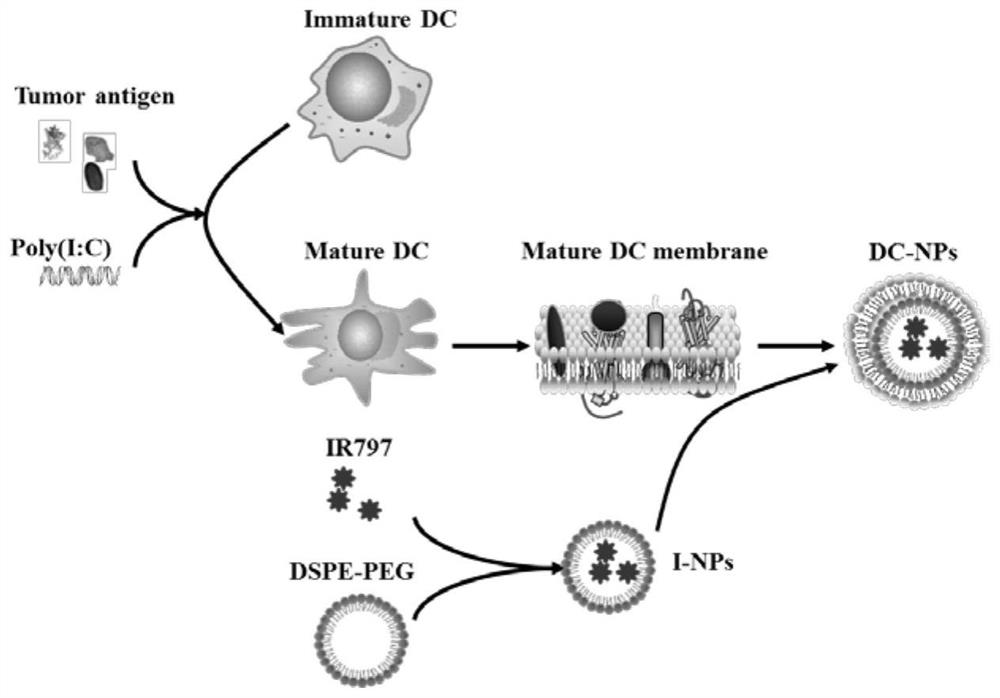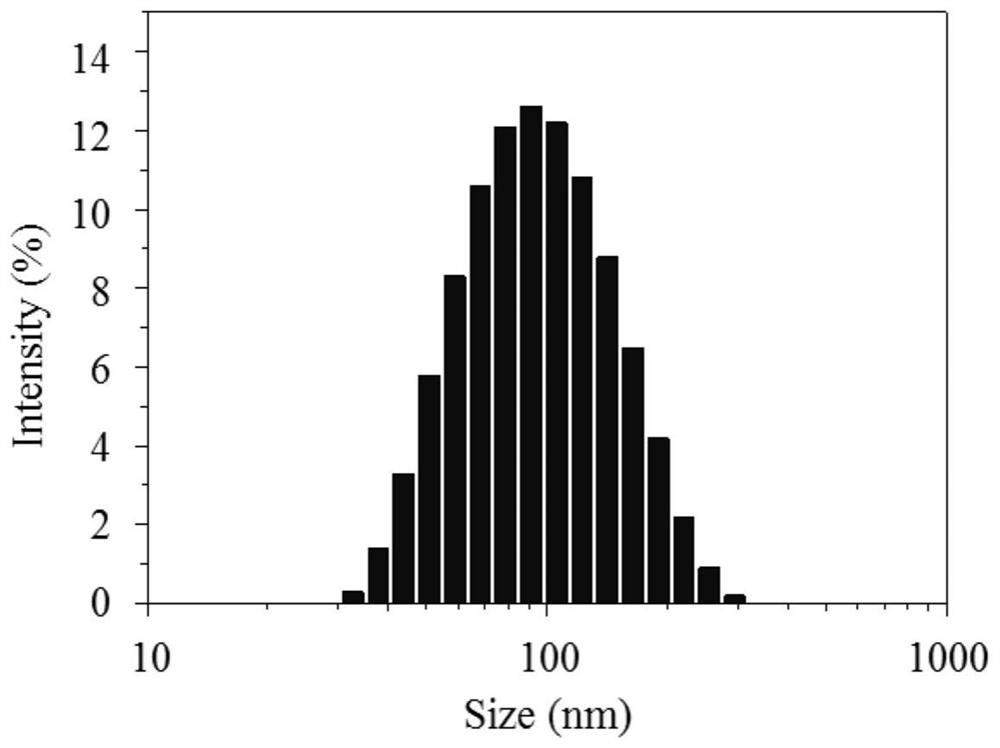Preparation and application of nano material for specifically activating immune system
A nanoparticle and dye technology, which is applied to preparations for in vivo experiments, medical preparations with inactive ingredients, and medical preparations containing active ingredients, etc., to achieve easy operation and promotion, promote photothermal treatment effects, and simple preparation methods. easy effect
- Summary
- Abstract
- Description
- Claims
- Application Information
AI Technical Summary
Problems solved by technology
Method used
Image
Examples
Embodiment 1
[0040] Example 1 Preparation of antigen-loaded DC membrane-wrapped IR-797 nanoparticles (DC-NPs)
[0041] Using phospholipid polyethylene glycol (DSPE-PEG) as the nanoparticle skeleton to prepare membrane-wrapped nanoparticles, and at the same time encapsulate IR-797 for NIR-triggered photothermal therapy and imaging, the preparation flow chart is attached figure 1 As shown, it specifically includes the following steps:
[0042] (1) Dissolve 2mg DSPE-PEG and 2mg IR-797 in 2ml chloroform, pipette and mix well, transfer the chloroform mixture to the bottom of a beaker filled with 15ml distilled water, feed nitrogen into the bottom of the beaker, blow off the chloroform, and make the IR- Due to the hydrophobic interaction, the lipophilic groups in DSPE-PEG are combined to form nanoparticles, and the resulting solution is DSPE-PEG / IR-797 solution.
[0043] (2) Lyse the DC cells with lysate, sonicate for 10 minutes, then centrifuge at 12,000g for 20 minutes to remove insoluble mat...
Embodiment 2
[0046] Characterization of Example 2DC-NPs
[0047] The morphology and structure of DC-NPs nanoparticles were observed by transmission electron microscopy. The zeta potential instrument analyzed the charge change of nanoparticles before and after DC cell membranes were encapsulated, and the particle size analyzer analyzed the particle size distribution of nanoparticles before and after DC cell membranes were encapsulated. The results are as follows Figure 2-3 As shown, the DC cell membrane was successfully wrapped on the surface of the nanoparticles, and the hydrated particle size of DC-NPs was 86±4nm. Fluorescence spectrometer was used to detect the fluorescence spectrum of DC-NPs nanoparticles to determine the imaging conditions, and UV-Vis absorption spectrometer was used to detect the UV-Vis absorption spectrum of nanoparticles to determine the laser wavelength for particle photothermal treatment. The results were as follows: Figure 4-5 As shown, the ultraviolet-visible ...
Embodiment 3
[0048] The photothermal treatment of embodiment 3DC-NPs
[0049] Female BALB / c (4-6 weeks, body weight 15-20g) subcutaneously injected 1×10 6 4T1 breast cancer cells. The formula for calculating tumor volume is: tumor length × (tumor width) 2 / 2. When the tumor volume reaches 100-200mm 3 When left or right, 200 μL of DC-NPs (IR-797 concentration of 100 μg / mL) was injected intravenously, and 0.3 W / cm 2 The power density of 808nm near-infrared laser was irradiated for 30 minutes, and the temperature of the irradiated part was maintained at 42°C.
[0050] 0.3W / cm 2 The power density of the 808nm near-infrared laser treated the tumor-bearing mice in the non-injected DC-NPs group for 15 days, and the tumor grew to about 1350mm 3 , while DC-NPs were treated with laser irradiation for 20 days, and the tumors were basically eliminated.
PUM
| Property | Measurement | Unit |
|---|---|---|
| particle size | aaaaa | aaaaa |
Abstract
Description
Claims
Application Information
 Login to View More
Login to View More - R&D
- Intellectual Property
- Life Sciences
- Materials
- Tech Scout
- Unparalleled Data Quality
- Higher Quality Content
- 60% Fewer Hallucinations
Browse by: Latest US Patents, China's latest patents, Technical Efficacy Thesaurus, Application Domain, Technology Topic, Popular Technical Reports.
© 2025 PatSnap. All rights reserved.Legal|Privacy policy|Modern Slavery Act Transparency Statement|Sitemap|About US| Contact US: help@patsnap.com



